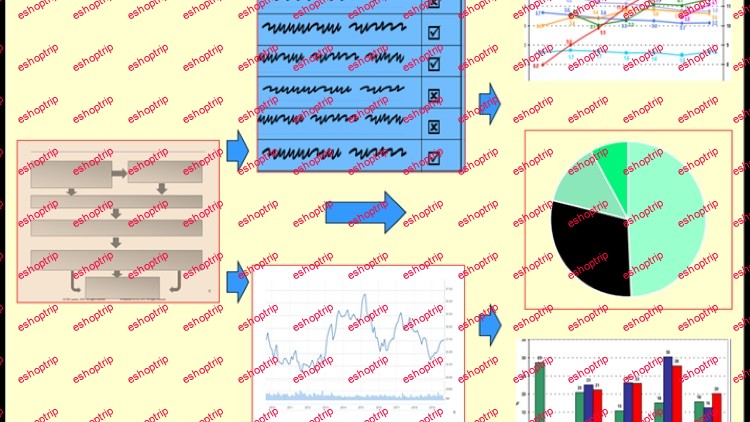Genre: eLearning | Language: English | Duration: 31 lectures (4h 12m) | Size: 1.75 GB
Doing quantitative research : research process & design, data collection (surveys, experiments), data analysis methods
What you’ll learn:
How to use quantitative research methods in your research projects
Requirements
Some familiarity with basic statistical terminologies (typically first or second year university courses in statistics)
Description
This is an introductory course for people interested in learning about quantitative research methods. It is aimed at researchers and postgraduate students doing or planning to do quantitative research.
We start with an overview of the quantitative research process and discuss the main components which include research questions, research hypothesis, research design, data collection , and data analysis. We discuss the differences between research question and research hypothesis, and overview the important parts and expectations of research design (including ethics considerations).
From there we move on to data collection methods, where we focus mainly on survey sampling methods and designed experiments for collecting data. For sample surveys, you will learn how to use (i) five probability sampling techniques (simple random sampling, systematic sampling, cluster sampling, stratified sampling and multi-stage sampling), and (ii) five non-probability sampling techniques (voluntary response sampling, convenience sampling , quota sampling, judgemental sampling, snowball/chain-referral sampling). You will learn how to use each of these methods, when to use them, and also their pros and cons . We also study designs of experiments, and explain where and how how theye are used. We discuss the main principles to consider when designing an experiment, such as replication, control, randomization, blinding , lurking variables. We then discuss examples of different types of designed experiments such as completely randomized designs, randomized block designs, and factorial designs. As part of data collection methods, we also consider the important factors to be taken into consideration for calculating the required sampling sizes for you study, such as (i)the levels of confidence you want in your results, (ii)margins of errors, (iii)the important differences you may want to detect using your planned data analysis methods, and (iv)the complexities of data analysis methods you plan to use.
From data collection methods,we move on to overview data analysis methods. We do not actually learn how to do data analysis in this course. However,you get introduced to some groups of data analysis methods and the types of statistical methodologies which are used within each group of data analysis methods. The purpose of this is for you to become aware of the possible statistical analysis methods which you could use for your data analysis.
The main groups of data analytics techniques we consider are (i)Exploratory Data Analysis, (ii)Dependence Analysis Techniques, (iii)Inter-Dependence Analysis Techniques, and (iv) Predictive Analysis Techniques. In Exploratory Data Analysis Techniques we overview many of the common summary statistics and visual techniques for data exploration, and for understading the structures in your data (eg pie charts, line charts, box-plots, x-y plots, histograms, etc). In Dependence Analysis Techniques, we overview several of the most common dependence analysis methods…..such as regression analysis, analysis of variance, linear models, generalised linear models, discriminant analysis, structural equations modelling, conjoint analysis, hierarchical linear models, canonical correlations, decision trees, artificial neural networks, and support vector machines. In Inter-Dependence techniques, we overview several techniques for understanding unstructured (and/or hidden) relationships among variables, objects, or individuals….. such as cluster analysis, principal components analysis, factor analysis, multidimensional scaling, correspondence analysis, artificial neural networks. In Prediction Analysis techniques, we identify several of the previously mentioned data analysis techniques which can also be used for prediction purposes…such as regression analysis, linear models, generalised linear models, discriminant analysis, decisiom trees, artificial neural networks, and suport vector machines. It is important to emphasize that, although we give examples of how some of these techniques are used, you will not be learning how to use these techniques in this course. That would be covered in a different ‘higher-level’ course (and not an introductory course in research methods, like this one).
In all Sections of the course, we shall review and discuss many examples of published research articles in peer-reviewed journals, which have used the techniques we learn about in the course. This is for you to learn by example (from these papers), and also for you to see that what we learn or cover in this course are indeed being used by other researchers like yourself (…and partially to validate the contents of this course).
We finish the course with a look-back at what has been covered in the course, and I also introduce two statistical/data analysis courses which I am working on right now which are (i)Applied Linear Regression Analysis (should be available by mid 2021) , and (ii)Applied Logistic Regression Analysis.
IMPORTANT UPDATE (Dated: September 5th 2021): Currently students who have enrolled in this course can submit their responses to Practice Questions/Exercises, and get feedbacks from me, on their responses. As enrolment numbers increase, this is becoming harder for me to maintain….and to continue providing feedbacks within a reasonable time. So, I have decided to stop that practice for new students. That is, current students and those who enrol before 1st October 2021 will indeed continue to receive feedbacks on their responses to Practice Exercises . But students who enrol from October 1st 2021 will no longer get feedbacks from me. Consequently, the price of this course will also be reduced slightly from October 1st 2021, since students who enrol from that date will no longer be getting feedbacks on their Practice Exercises. However, I still encourage new students enrolling from October 1st 2021, to continue doing the Practice Exercises for their own practical learning purposes (which is really the main intention of those Practice Exercises anyway, whether you get feedbacks from me or not).
Who this course is for
Researchers and Postgraduate students (Honours, Masters, PhD), interested in learning about quantitative research methods











Reviews
There are no reviews yet.